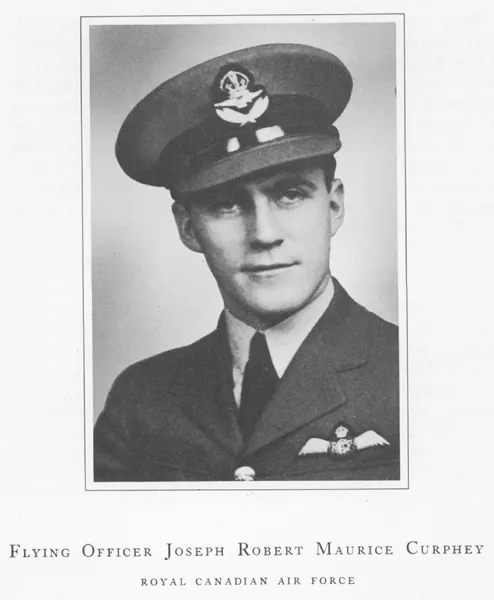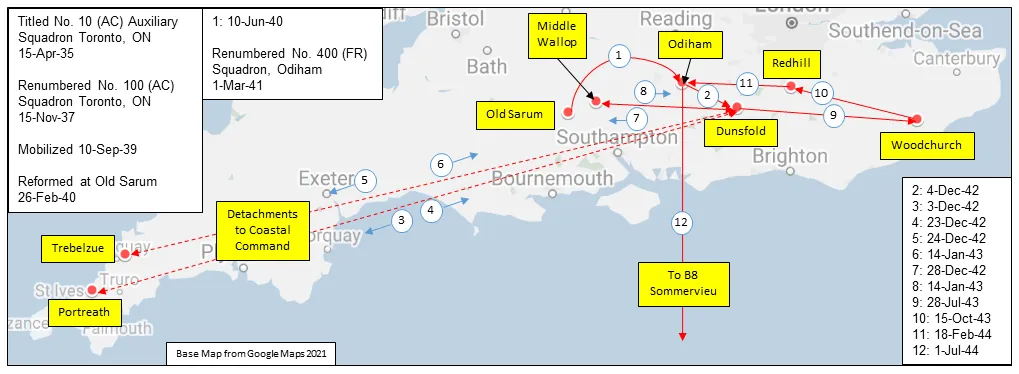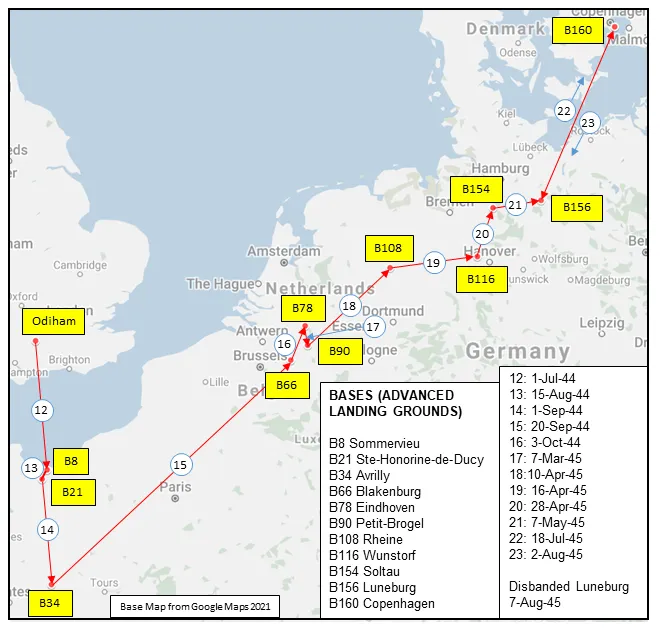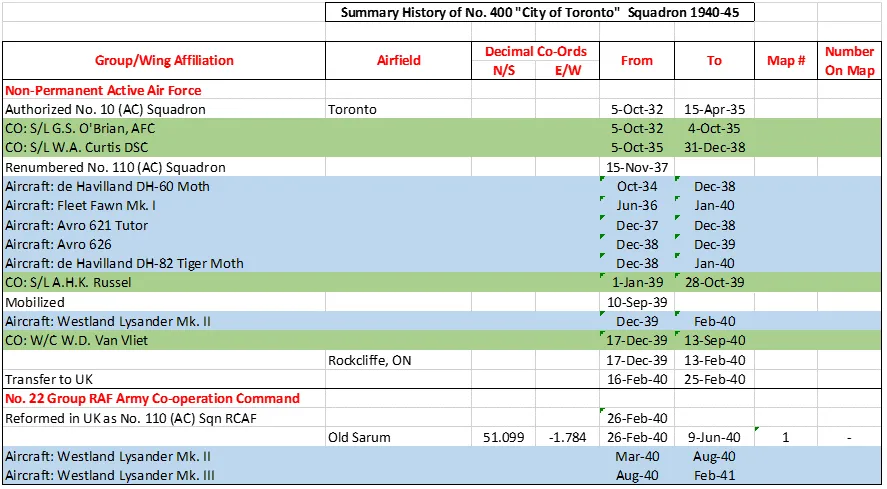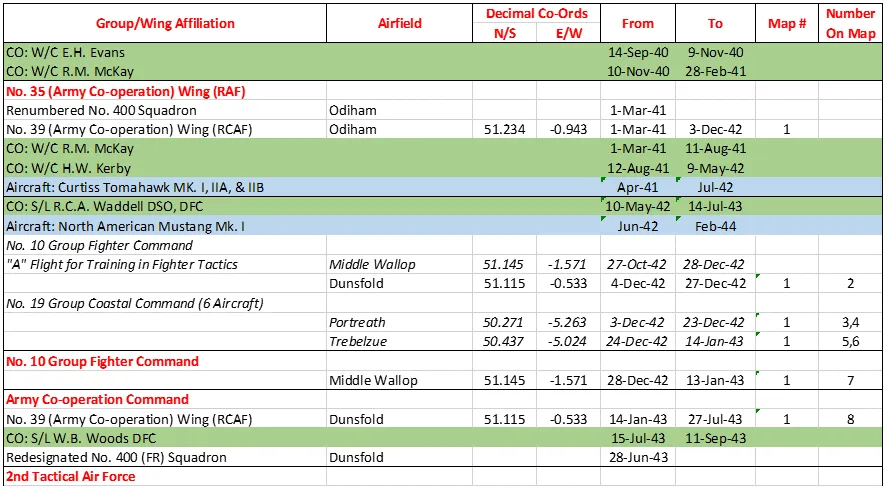Miles M.27 Master Mk. III, RAF (Serial No. W8667), No.5 SFTS.
(IWM Photo, COL 198)(Source Harold A Skaarup Web Page)
The Miles M.9 Master was a British two-seat monoplane advanced trainer designed and built by aviation company Miles Aircraft Ltd. It was inducted in large numbers into both the Royal Air Force (RAF) and Fleet Air Arm (FAA) during the Second World War.
The Master can trace its origins back to the earlier M.9 Kestrel demonstrator aircraft. Following the failure of the rival de Havilland Don as a satisfactory trainer aircraft, the RAF ordered 500 M9A Master advancer trainers to meet its needs. Once in service, it provided a fast, strong and fully aerobatic aircraft that functioned as an excellent introduction to the high performance British fighter aircraft of the day: the Spitfire and Hurricane. Throughout its production life, thousands of aircraft and various variants of the Master were produced, the latter being largely influenced by engine availability. Numerous Masters were modified to enable their use as glider tows. The Master also served as the basis for the Miles Martinet, a dedicated target tug adopted by the RAF.
Perhaps the most radical use of the aircraft was the M.24 Master Fighter. Armed with six .303 in machine guns, it was intended to function as an emergency fighter during the Battle of Britain; this model did not ultimately see combat. Ordinary trainer models could also be fitted with armaments, including a single .303 in Vickers machine gun and eight bombs, albeit intended for training purposes only. Beyond the British air services, other nations also chose to adopt the Master, including the South African Air Force, United States Army Air Force (USAAF), Irish Air Corps, Royal Egyptian Air Force, Turkish Air Force, and the Portuguese Air Force. While thousands of Masters were manufactured, no complete examples have been preserved.
Wikipedia
 Master Trainer
Master Trainer
 Wikipedia Master Trainer
Wikipedia Master Trainer
 Harold A Skaarup Web Page
Harold A Skaarup Web Page
400 Sqn Percussuri Vigiles ("City of Toronto")
History of the Squadron before and during World War II (Aircraft:Lysander III, Tomahawk I, IIA, IIB, Mustang I, Mosquito PR Mk. XVI, Spitfire PR Mk. XII)
The squadron started life as No. 10 (Army Co-Operation) Squadron (Auxiliary) at Toronto in October 1932. In November 1937 the unit was renumbered No 110. On the outbreak of WWII, the squadron was mobilized and moved to Rockcliffe, ON, to train on Westland Lysander aircraft, having previously flown de Havilland DH-60 Moth, Fleet Fawn, Avro 621 Tutor, Avro 626, and de Havilland DH-82 Tiger Moth. The squadron arrived in England in February 1940. The squadron did not see action and with the fall of France, it remained in England, and was later renumbered as No. 400 (Army Cooperation) Squadron at Odiham, Hampshire, UK  on March 1, 1941.
on March 1, 1941.
From then until 3 December 1942 the squadron was affiliated to No. 39 (Army Co-operation) Wing (RCAF), then it moved to Fighter Command (No 10 Group) at Dunsfold, Surrey. In December 1942 and January 1943 a section of aircraft flew in No 19 Group of Coastal Command providing fighter cover over the Bay of Biscay from airfields at Portreath and Trebelzue, Cornwall. The squadron rejoined 10 Group and then rapidly returned in January 1943 to No 39 Army Co-operation Wing, by now designated as a Fighter Reconnaissance (FR) Squadron. It then formed part of the 2nd Tactical Air Force, based successively at Woodchurch, Kent, Redhill, Surrey and Odiham, Hampshire. With squadron code letters SP, the squadron flew Curtiss Tomahawks, North American Mustangs and Supermarine Spitfires on photo-reconnaissance work, collecting intelligence information to help to plan the D-Day invasion, and later on the effects of bombing of V-1 launch sites. From December 1943 to May 1944 the squadron aircraft included 6 Mosquito PR Mk XVI. Shortly after D-day the Squadron moved to airfields in France, and provided tactical photographic reconnaissance for the British Second Army. As the armies moved forwards, the squadron followed, flying from bases in France, Belgium, The Netherlands and Germany. The squadron was finally disbanded at Luneburg, Germany  in August 1945.
in August 1945.
In the course of the war, the squadron flew around 3000 sorties, for the loss of 12 pilots killed or missing. They destroyed numbers of enemy aircraft and attacked numerous trains and locomotives. They were awarded 10 DFC's, 1 Bar to DFC, 1 BEM, 3 MiD's. Battle Honours include Fortress Europe 1941–44, Dieppe, France and Germany 1944–45, Normandy 1944, Arnhem, Rhine, Biscay 1942–43 Kostenuk and Griffin
Maps for Movements of 400 Squadron 1940-45
MAP 1: 400 Squadron Movements in Britain 1940-44, (right-click on image to display enlarged in new tab)
|
MAP 2: 400 Squadron Movements in Europe 1944-45
|
400 Sqn History Summary 1939-45
400 Sqn History Summary 1939-45 Page 2
400 Sqn History Summary 1939-45 Page 3
History of the Squadron Post-WWII (Aircraft: Harvard III, Vampire III, Sabre V, Expeditor, Otter, Kiowa, Griffin)
No. 400 Squadron reformed at RCAF Station Downsview, ONtario  on 15 April 1946 as an Auxiliary Fighter-Bomber Squadron, and later as an Auxiliary Fighter Squadron, operating North American Harvard Mk IIB. At the start of the Cold War the squadron flew de Havilland Vampire Mk IIIs and then Canadair Sabre Mk.V aircraft. It was re-named No. 400 "City of Toronto" (Fighter) Squadron on 6 November 1952, and then re-designated No. 400 “City of Toronto†Sqn (Aux) on 1 October 1958, when it was reassigned to a light transport and emergency rescue function and was equipped with Beechcraft Expeditor (1958) and de Havilland Otter (1960) aircraft. These aircraft were flown throughout the 1960s and 1970s.
on 15 April 1946 as an Auxiliary Fighter-Bomber Squadron, and later as an Auxiliary Fighter Squadron, operating North American Harvard Mk IIB. At the start of the Cold War the squadron flew de Havilland Vampire Mk IIIs and then Canadair Sabre Mk.V aircraft. It was re-named No. 400 "City of Toronto" (Fighter) Squadron on 6 November 1952, and then re-designated No. 400 “City of Toronto†Sqn (Aux) on 1 October 1958, when it was reassigned to a light transport and emergency rescue function and was equipped with Beechcraft Expeditor (1958) and de Havilland Otter (1960) aircraft. These aircraft were flown throughout the 1960s and 1970s.
Unification of the Canadian Forces brought about another name change, this time to 400 "City of Toronto" Air Reserve Squadron on 1 February 1968. In 1980, the conversion to helicopters began with the CH-136 Kiowa. The squadron received its current name in the 1980s, becoming 400 Tactical Helicopter and Training Squadron. The squadron moved to CFB Borden, Ontario  in 1996 after the closure of CFB Downsview, and is now equipped with the CH-146 Griffon.
in 1996 after the closure of CFB Downsview, and is now equipped with the CH-146 Griffon.
During peacetime, the squadron fulfills 1 Wing commitments by providing operational and training support to the 4th Canadian Division, the defence of Canadian sovereignty, support to national taskings, and support to peacekeeping operations. Its secondary duties are to support search and rescue operations of the Royal Canadian Air Force.
 Government of Canada RCAF Website
Government of Canada RCAF Website
